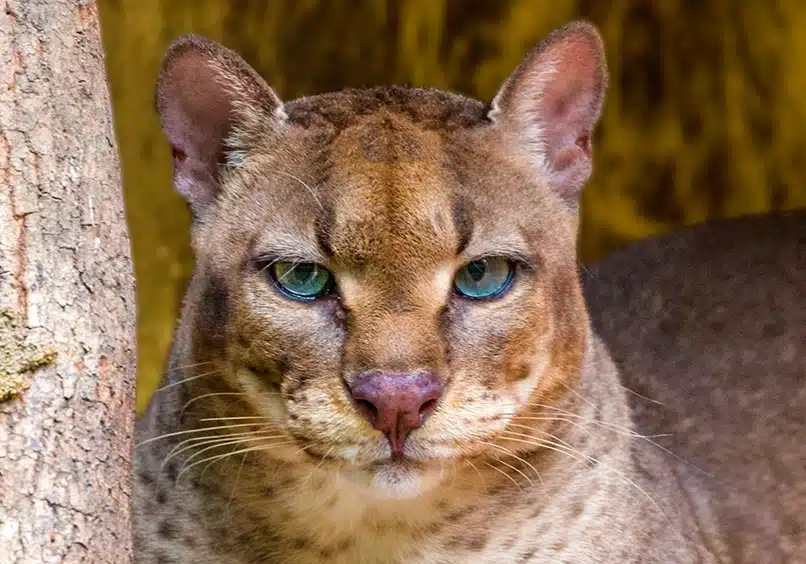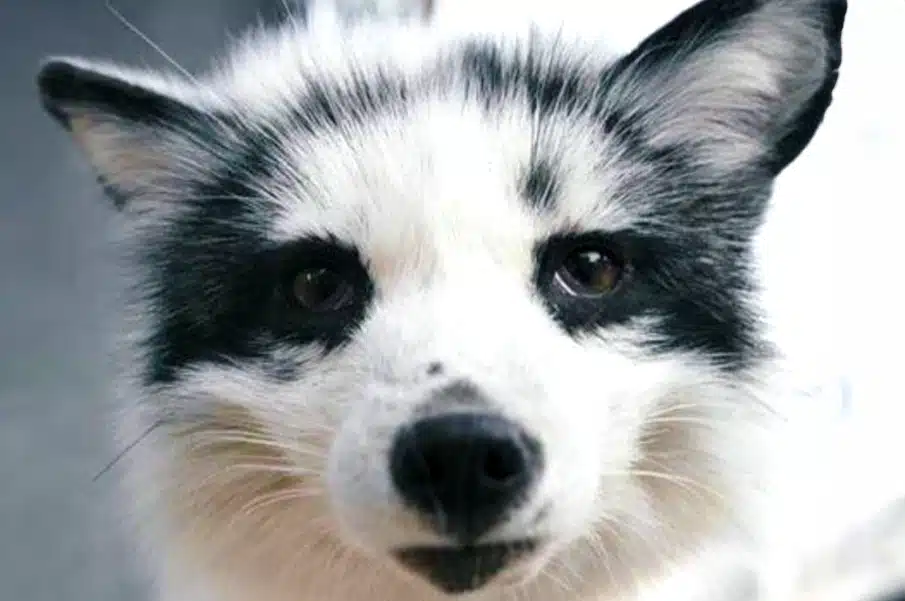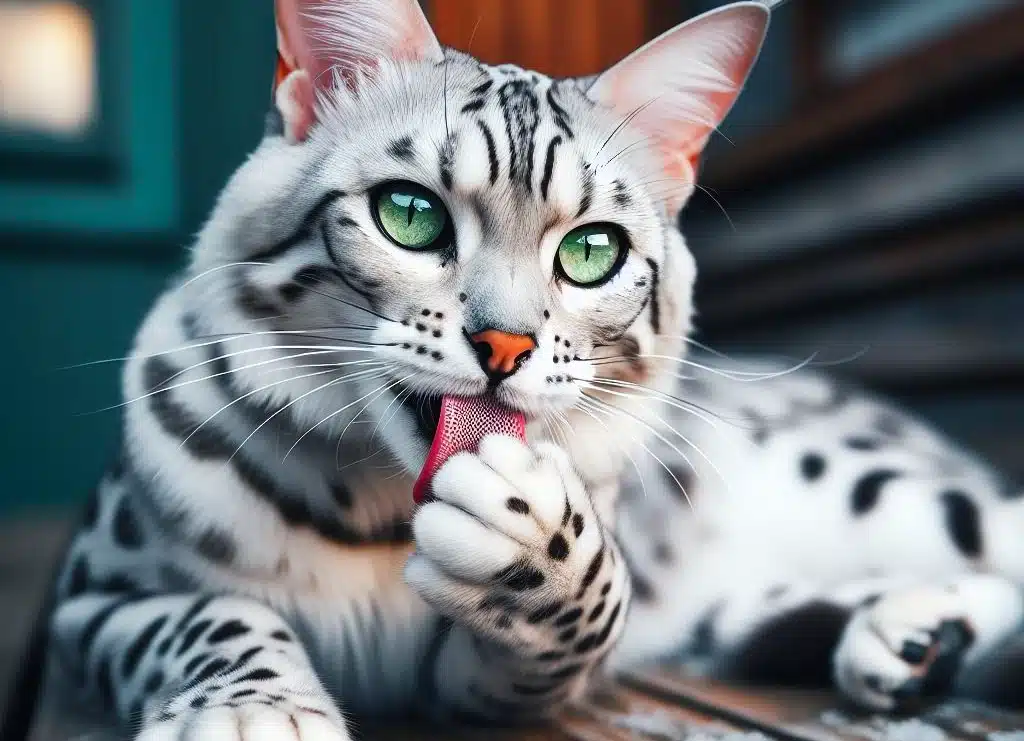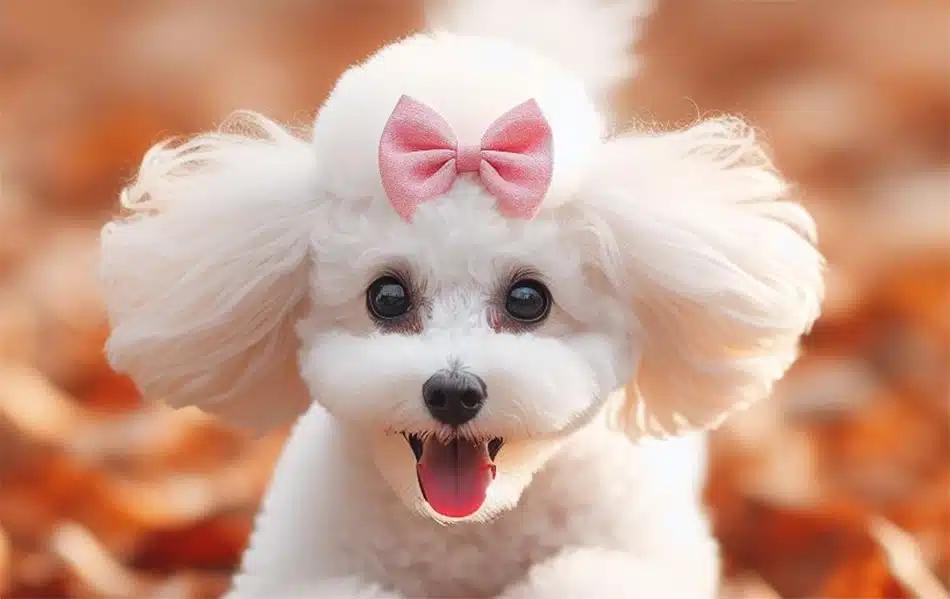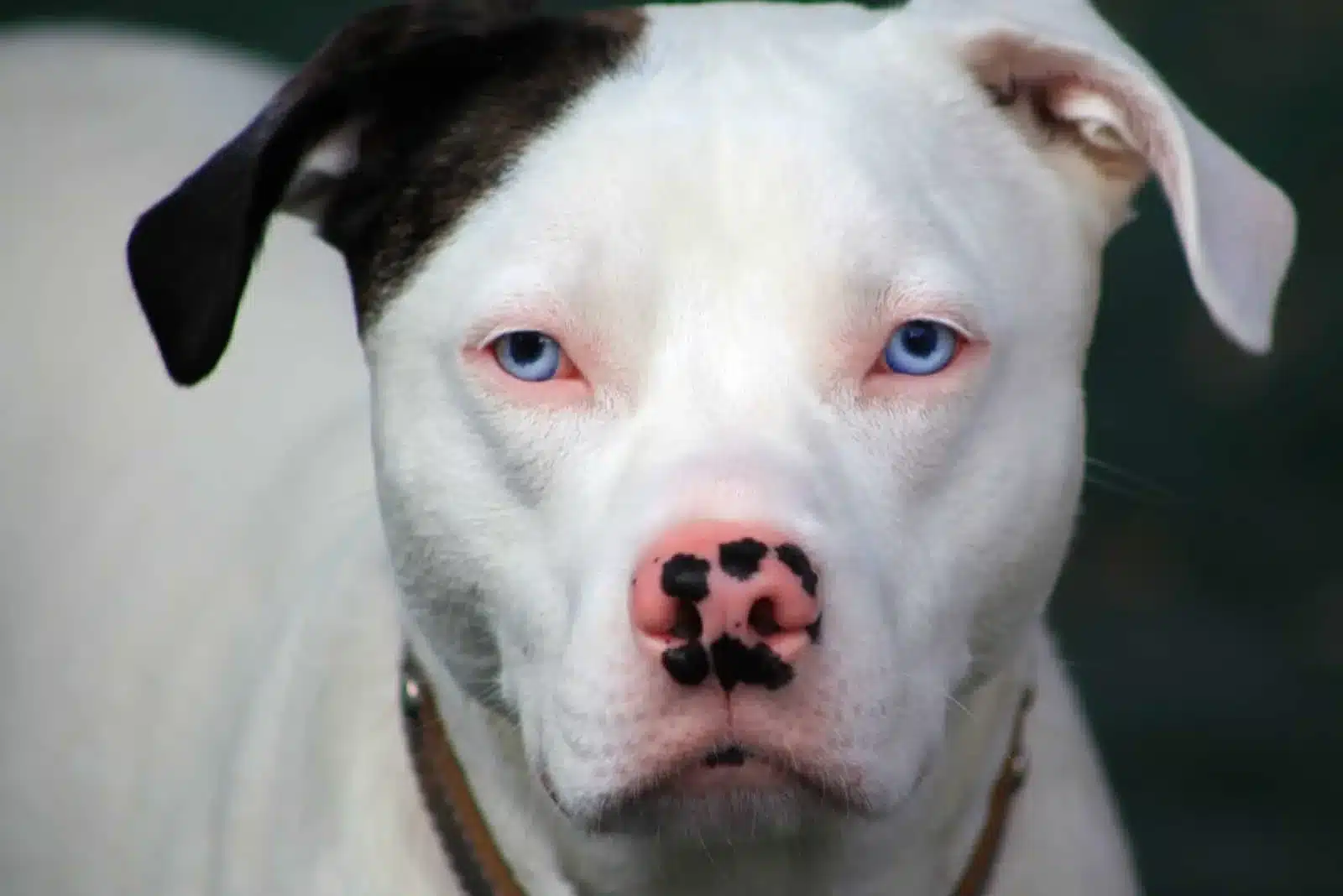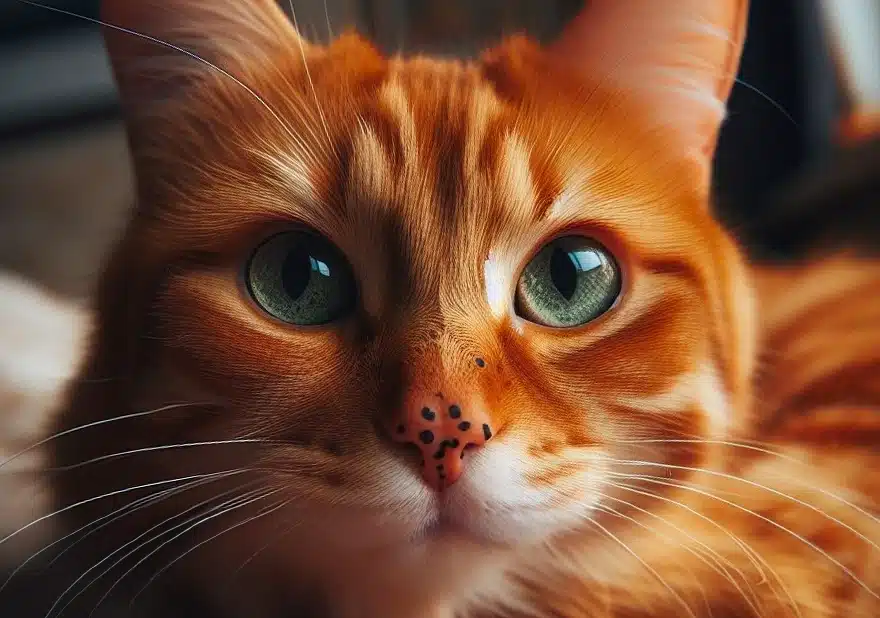The Harlequin Cat: Unraveling the Mystery of This Unique Feline
Ads Disclosure ?
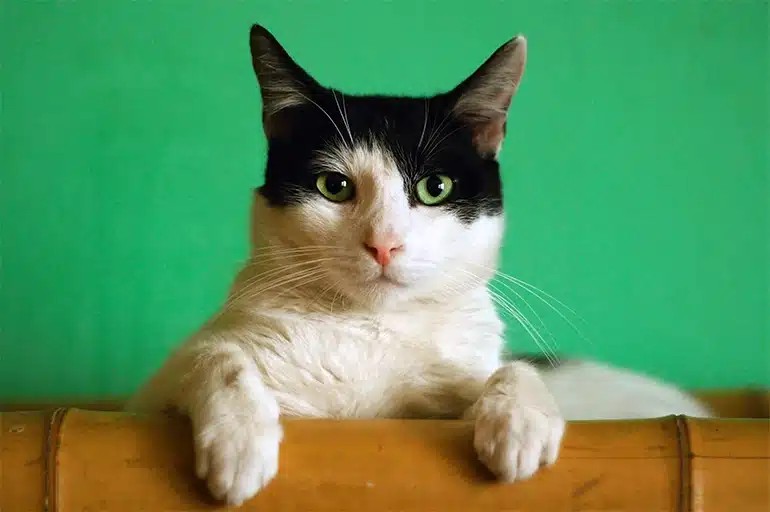
Harlequin cats sport a unique and eye-catching coat pattern that has captured the attention of cat enthusiasts worldwide. Their coat is predominantly white with spots of another color dispersed over the head and body, making each harlequin cat truly one-of-a-kind. As a type of bicolor or piebald, the classification of this coat pattern depends on the ratio of white to colored fur.
This coat pattern is not limited to a specific breed or gender, as cats with varying backgrounds can display the stunning harlequin pattern. The colors of patches on harlequin cats can include black, gray, brown, orange, red, and cream, sometimes even featuring tabby patterns. While the coat pattern is what initially attracts people to harlequin cats, they are also known for their playful and friendly nature, making them a popular choice for families and individuals alike.
Though the harlequin pattern may appear on different breeds, some breeds are more commonly associated with this coat variation. The Turkish Van, for example, is a breed known for its affinity for the harlequin pattern. These distinctive and beautiful felines are sure to continue winning the hearts of cat lovers everywhere.
Jump To Section
Harlequin Cat History
Origins
It’s important to understand that Harlequin cats are not a specific breed themselves, but rather a color pattern found on some domestic cats. This bicolor and tricolor coat pattern features predominantly white fur with spots of another color dispersed over the head and body. Their origins can be traced back to spontaneous mutations within cat populations, leading to the emergence of this distinct coat pattern.
Breed Development
The Harlequin is not a breed in the traditional sense but refers to a color pattern in cats, predominantly found within certain lineages. As the Harlequin pattern became more popular among cat enthusiasts, breeders began selectively breeding cats with this unique coat pattern to enhance and stabilize the appearance. Over time, several cat breeds, such as the Harlequin Rex, have developed a consistent Harlequin pattern, although it can still occur in various cat breeds.
It’s crucial to notice that Harlequin cats are more than just a pretty coat pattern – they have also gained a reputation for their playful nature and friendly temperament. While the history of the Harlequin pattern is still a mystery, it is clear that these cats have captured the hearts of many cat lovers and will continue to impress for years to come.
Physical Characteristics
Coat and Patterns
Harlequin cats are known for their distinctive coat pattern which consists of a predominantly white base with solid-colored patches covering one-fourth to one-third of their body, including the tail. The patches on a Harlequin cat’s fur should be well-defined and ideally surrounded by white spotting. This unique pattern can be found in various breeds of cats, making them visually striking and easily recognizable.
The arrangement of the color patches themselves on the coat can be random, which contributes to these cats’ charm and uniqueness.
The color of the patches on Harlequin cats can include an array of hues such as black, blue, gray, red, cream, brown, and orange. Some Harlequin cats also display other color variations such as chocolate, lilac, fawn, cinnamon, and even shades like colorpoint, associated with certain breeds like the Colorpoint Shorthair. The vibrancy and contrast of these colors against the white base of their coat create visually striking patterns.
Size and Weight
As Harlequin cats can be from different breeds, there is no specific size and weight range for them. However, their size and weight mainly depend on their breed. For example, a Harlequin Maine Coon would have a larger and heavier build compared to a Harlequin Domestic Shorthair. Generally, cats range from small to medium size, with their weight typically varying from 6 to 18 pounds.
Eye and Ear Features
Eye and ear features of Harlequin cats also depend on their breed. Some breeds that can display the Harlequin pattern, such as Siamese cats or Colorpoint Shorthairs, are more likely to have blue eyes and distinctly-shaped ears, as mentioned in PetPress. Other breeds may show a variety of eye colors and ear shapes. Regardless of their breed, Harlequin cats always have an alluring appearance due to their exclusive coat pattern and individual physical features.
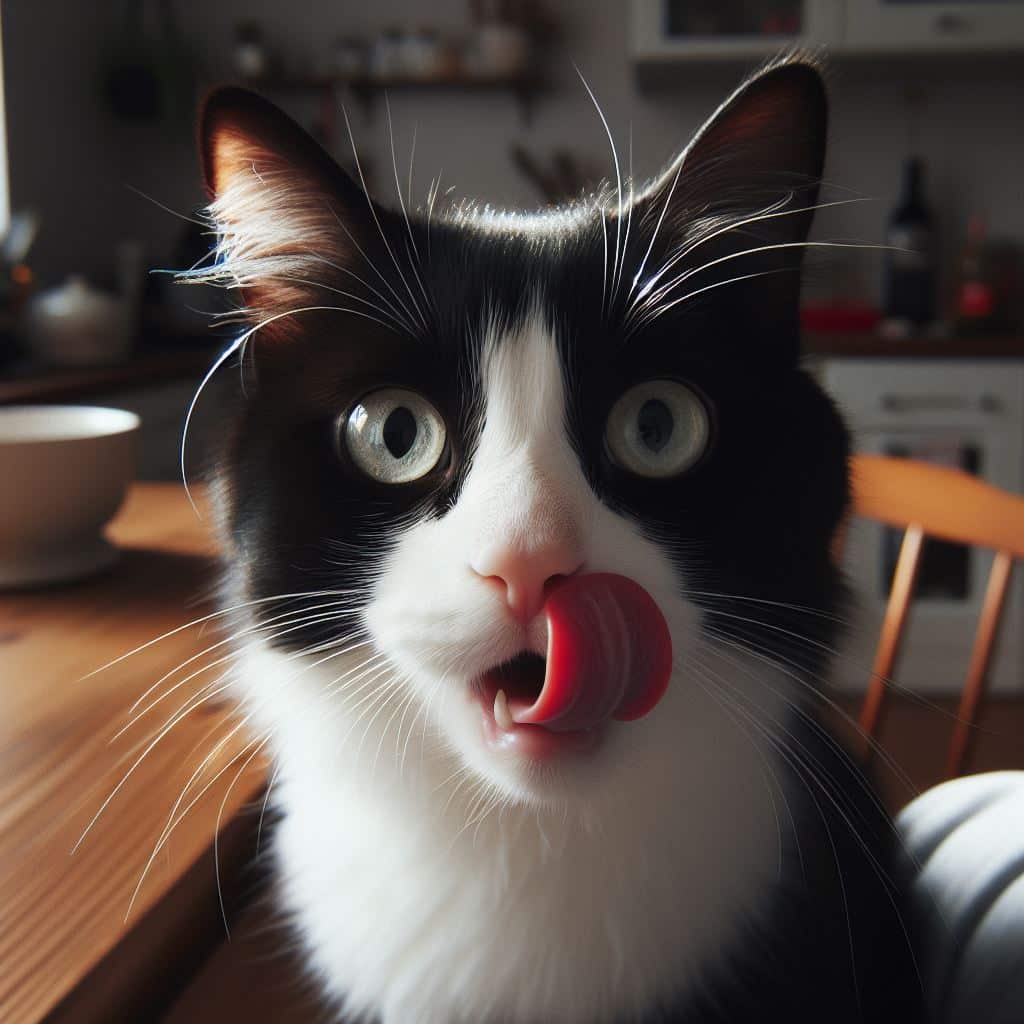
Personality Traits
Temperament
Harlequin cats are known to be playful and friendly. They tend to have an outgoing personality, which makes them great companions for families and individuals alike. These cats are active and enjoy engaging in physical activities, exploring their surroundings, and playing with their owners or other pets in the household. In addition to their playful disposition, Harlequin cats are also affectionate and form strong bonds with their owners, making them excellent pets for people of all ages and lifestyles.
Intelligence
Harlequin cats possess a remarkable level of intelligence. They are quick learners and often display a natural curiosity about their environment. As a result, they enjoy engaging in mental stimulation activities such as puzzle toys, interactive play, and learning new tricks. This intelligence also means that Harlequin cats can be trained more easily than some other cat breeds, which can be beneficial for owners who wish to teach their pets specific behaviors or commands.
Social Behavior
Socially, Harlequin cats are known for their adaptability and ability to get along well with both humans and other animals. They often enjoy the company of other cats, as well as dogs and other household pets, making them a suitable choice for multi-pet households. Harlequin cats typically do well with children, as their playful nature and gentle temperament make them a fun and engaging companion for young family members. It is important, however, to teach children proper handling and interaction with their Harlequin cat to ensure a positive relationship between them.
Cat Breeds Featuring Harlequin Patterns
Popular Breeds
British Shorthair: Known for its dense and plush coat, the British Shorthair occasionally sports the harlequin pattern, characterized by a primary white coat speckled with patches of color.
Maine Coon: The majestic Maine Coon can also exhibit harlequin markings. Despite the breed’s large size and thick fur, the pattern is easily recognizable.
Japanese Bobtail: This breed, with its short tail, can also have a harlequin coat pattern, often combined with its signature tricolor or “mi-ke” coloring.
Persian Cat: Regal in appearance, the Persian cat’s luxurious and flowing coat can also display harlequin patterns, though less commonly.
Munchkin Cat: Their shorter stature doesn’t detract from the distinctiveness of the harlequin pattern that some Munchkin cats feature.
Turkish Van: This breed is often associated with the Van pattern, which is similar to harlequin, encompassing large colored spots on primarily white fur.
Rare Varieties
Norwegian Forest Cat: Although primarily known for its wilderness-like appearance, some Norwegian Forest Cats can bear the harlequin pattern.
Sphynx: While hairless, the Sphynx’s skin reveals a variety of patterns, including harlequin, showcasing this breed’s unique aesthetics.
Ragdoll: Though Ragdolls are generally pointed cats, there are instances where a harlequin pattern can be found among this breed’s varied coat colorations.
Health and Care
Proper health and care are critical for Harlequin cats to lead a full and vibrant life. This includes a balanced diet, regular grooming, and close attention to any health issues that may arise.
Nutrition and Exercise
Harlequin cats require a diet rich in protein to support their muscular build and high energy levels. It is important to provide them with high-quality cat food that meets AAFCO standards, with a preference for formulations that cater to their life stage – kitten, adult, or senior. These cats benefit from scheduled feedings rather than free-feeding, to prevent obesity. Along with balanced nutrition, daily exercise is essential to maintain their physical health and prevent behavior issues. Interactive playtime, such as with feather wands or laser toys, offers both physical activity and mental enrichment.
Grooming and Maintenance
Routine grooming for a Harlequin cat is straightforward due to their short, manageable coat. Brushing them once a week is usually sufficient to keep their coat healthy and reduce shedding. Regular nail trims, ear cleanings, and dental care are also important to prevent common issues such as periodontal disease. They may require more frequent grooming during seasonal changes when they shed more heavily.
Common Health Issues
Harlequin cats, like all breeds, can experience specific health concerns, including genetic predispositions to certain conditions. Regular check-ups with a veterinarian are vital to catch any signs of trouble early. One issue to be aware of is deafness, which can be more prevalent in white cats with blue eyes; Harlequin cats with significant white in their coats should be monitored for hearing issues. It is equally important to be watchful for signs of common feline diseases such as upper respiratory infections or urinary tract problems.
Adoption and Ownership
Adopting a harlequin cat involves careful selection and a readiness to commit to the responsibilities of pet ownership.
Choosing a Cat
When selecting a harlequin cat, prospective owners should consider the rarity of the breed. Harlequin cats are a distinct type of bicolor or tricolor cat, often predominantly white with spots of other colors. Since they are not commonly found in shelters or rescue organizations, one usually needs to contact an established breeder. A breeder can provide specifics about the cat’s lineage, health, and temperament, which are critical for ensuring a good match with the owner’s lifestyle.
The Commitment of Pet Ownership
Owning a pet is a long-term commitment that encompasses fulfilling the animal’s daily needs, health care, and emotional support. Harlequin cats, like other domestic cat breeds, require a diet tailored to their specific needs, routine grooming, and regular veterinary check-ups. Owners should be aware of the characteristics and needs of the breed, such as the potential for a harlequin cat to have the talkative traits of a Maine Coon or the placid nature of a Ragdoll, should it be a mixed breed with such traits. Educating oneself about these breeds is essential, as highlighted by resources like Harlequin Haven Paws. While the pattern of a harlequin cat can resemble a calico or cow cat, the term “harlequin” describes a specific pattern within the bicolor spectrum and should not be confused with these other terms.
Other Unusually Colored Cats
Harlequin cats are extremely unique, but they are far from the only unusually colored cats out there. Some non-Harlequin cats (such as those exhibiting rare genetic mutations such as Piebaldism or Chimerism) have extremely unique fur markings and unusual color patterns.
Frequently Asked Questions
What is the difference between a calico cat and a harlequin cat?
Calico cats have a tri-color coat pattern, typically featuring orange, black, and white colors. In contrast, harlequin cats have a predominantly white coat with spots of another color dispersed over the head and body. The primary difference between these two coat patterns is the number and arrangement of colors on the cat’s fur.
What is the difference between a magpie and a harlequin cat?
The term “magpie” is not a recognized term in feline genetics, but refers to cats with a black and white coat resembling the bird of the same name. A harlequin cat is characterized by its distinct coat pattern, which consists of predominantly white fur with a pattern of large (often black) patches of color that cover more than half of their body
What is the rarest colored cat?
The rarest colored cat is arguably the chocolate-colored cat, particularly if it appears in breeds that don’t typically showcase this color. This dark brown coloring is caused by a recessive gene and is uncommon in many cat breeds.
What breed is a moo moo cat?
A “moo moo cat” is not a recognized cat breed. The term might refer to a cat with a coat pattern resembling a Holstein cow, typically white with black patches. Harlequin cats often exhibit this white and black patch combination, but it is essential to remember that “moo moo cat” is not an official breed or coat pattern name.
What makes a harlequin cat unique?
A harlequin cat’s unique coat pattern sets it apart from other cats. Comprising predominantly white fur with solid-colored patches dispersed over the head and body, this coat pattern is visually striking and recognizable. Additionally, the white and colored patches should cover specific proportions of the cat’s body, further distinguishing the harlequin cat from other bicolor or tricolor cats.
How is the personality of a cap-and-saddle cat?
“Cap-and-saddle” is a term used to describe a specific coat pattern, similar to the harlequin pattern, on some cats. Instead of extensive colored patches, a cap-and-saddle cat has more confined markings, such as a cap over the head and a saddle on the back. The personality of a cap-and-saddle cat depends on its breed and individual temperament, as coat patterns do not generally dictate a cat’s behavior or personality traits.
Which breeds can exhibit the Harlequin coat pattern?
The Harlequin coat pattern is not breed-specific. It can appear in various cat breeds, as it’s a type of bicolor pattern primarily seen in domestic cats, identified by the distinctive white fur with spots of color.
What is the average lifespan of cats with a Harlequin coat?
The lifespan of cats with a Harlequin coat pattern is typically similar to other domestic cats, ranging from 12 to 15 years. Overall health and genetics play a more crucial role than coat patterns in determining lifespan.
Can Harlequin-patterned cats be any color, for instance, is there an orange Harlequin cat?
Yes, Harlequin-patterned cats can display a variety of colors, including orange. The pattern describes the placement and proportion of colors rather than specific colors themselves.
How much might one expect to pay for a kitten with a Harlequin coat?
The price of a kitten with a Harlequin coat can vary widely depending on factors such as breed, location, and pedigree. They are not typically more expensive due to the coat pattern alone, as it can occur in many common breeds.

